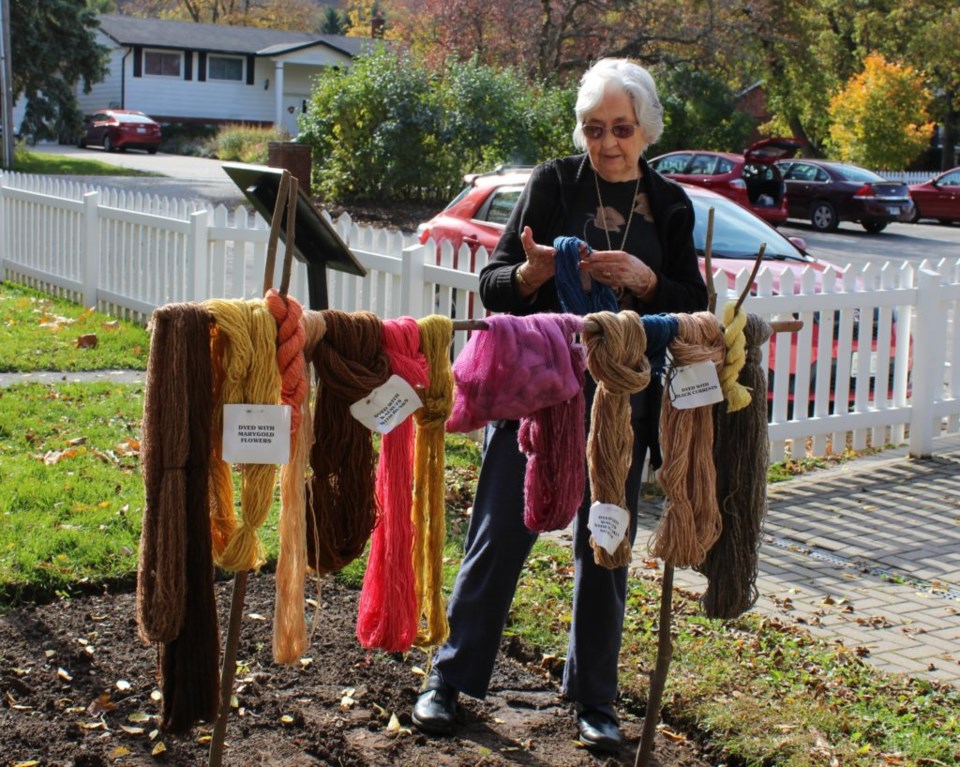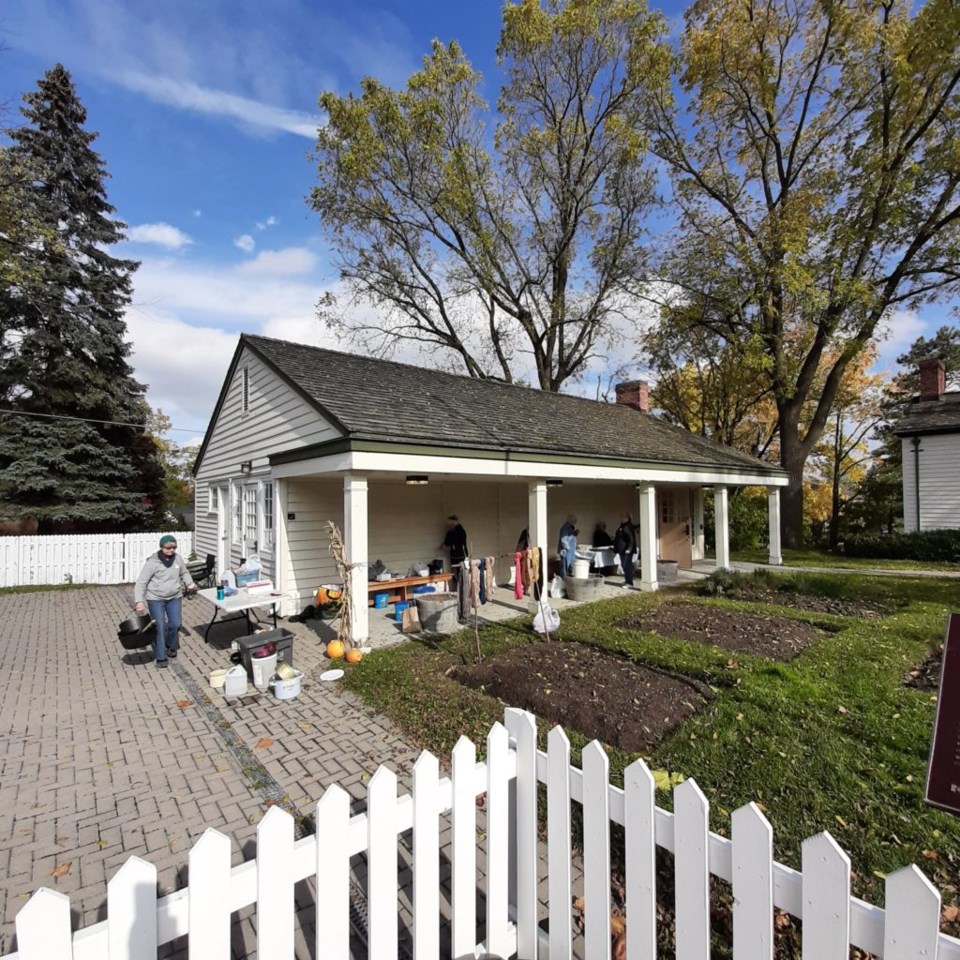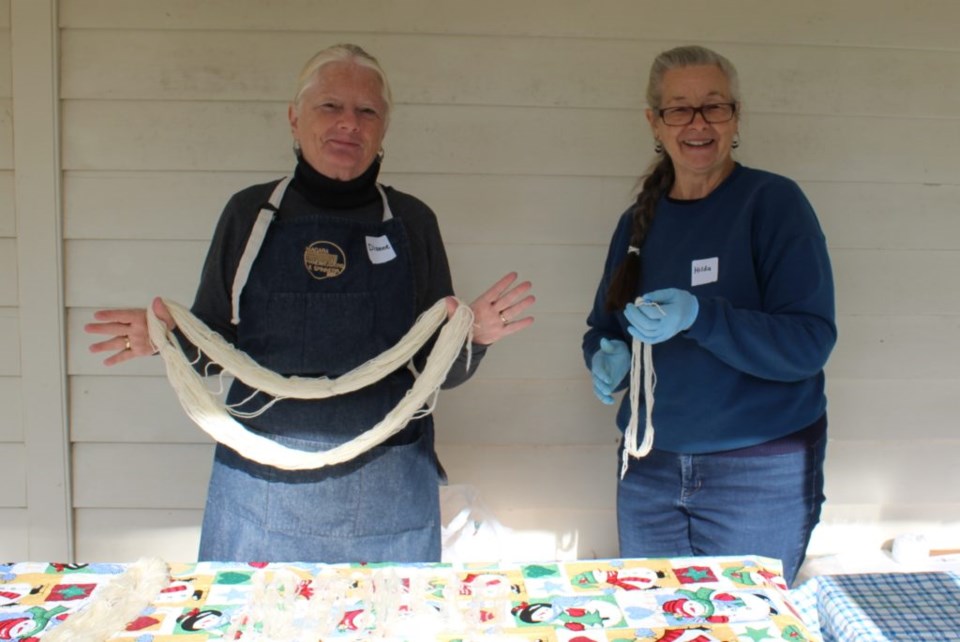
Queenston’s gorgeous fall colours were an inspiration for the members of the Niagara Handweavers and Spinners Guild as they hosted Radiant Colours: Natural Dye Workshop at the Laura Secord Homestead Saturday morning.
The natural hues of the leaves on the surrounding trees were duplicated on the wool and yarn dyed by the participants in this workshop. Teachers from the guild instructed participants in historic methods of dying wool and yarn with natural dyes made from local plants, including black walnut, black walnut husks, marigolds, black currants and onion skins. Other natural dyes such as indigo and cochineal beetles were also used to add to the variety of colours.
First, participants prepared the colour fixatives, or mordant. For this workshop, alum was used as the fixative to help colour set the yarn. Other possible natural fixatives are salt, vinegar, and cream of tartar, the teachers explained.
The dye solution was prepared from the plant material or powders available, which were added to water and brought to a boil in a stainless steel pot on a single burner. Next, the plant material was strained out. Wool or yarn was added to the pot and simmered until it reached the desired colour, then rinsed with cold water. There was ample experimentation with colours and hues. Colours ranged from deep brown to lighter tan, lighter salmon pink and rich yellow.
Long time member of the guild, Gerda Avz, reminisces about when they held these dyeing workshops at Balls Falls in Vineland. She explained that each member of the group would bring an ingredient for the communal soup pot. After a day of dyeing their yarn and socializing, each person would go home with a mason jar of the “Stone Soup,” she said, Stone Soup being the name of a European folk story about how a town came together to make soup for a hungry soldier. The moral of the story emphasizes the value of sharing, she explained, highlighted for the guild by sharing their knowledge, skills and materials with one another.
Having been a member since 1976, Avz said the fun part now is seeing the guild moving into their third generation of weavers. Her children know how to weave and spin and even her grandchildren are learning, she said. In addition to her children and grandchildren, Avz also shared this knowledge by teaching the craft at Niagara District Secondary School when it was open and briefly at E.L. Crossley High School in Fenwick.
Formed in 1948 with 14 members, the guild now has 60 members and is growing. According to vice-president Bettieanne Buck, their members come from all over the Niagara Region, from Fort Erie to Jordan and many of the towns in between. Buck is new to weaving but is enthusiastic about the craft and the guild.
“It is a great hobby,” she says, and “lovely to learn about these things” such as weaving, spinning and natural dyeing. Weaving and spinning “is not a dying art, it seems like more people are interested all the time, she adds.
The guild has partnered with the Welland Museum with an exhibit by the guild, Woven in Time. To Avz and Buck, the main attraction of the exhibit is the quilt that was made by assembling squares of weaving produced by individual members. Each square represents the country of origin of that member. The Niagara Handweavers and Spinners Guild members gather in their studio in the lower galleries at the museum on Thursday mornings to practise their craft. The public is invited to visit the museum for weaving and spinning demonstrations on these days.
For information on the exhibit and the museum, visit the Welland Museum at 140 King St., Welland, or call 905-732-2215. For more information about the guild and upcoming events, visit nhws.ca.




